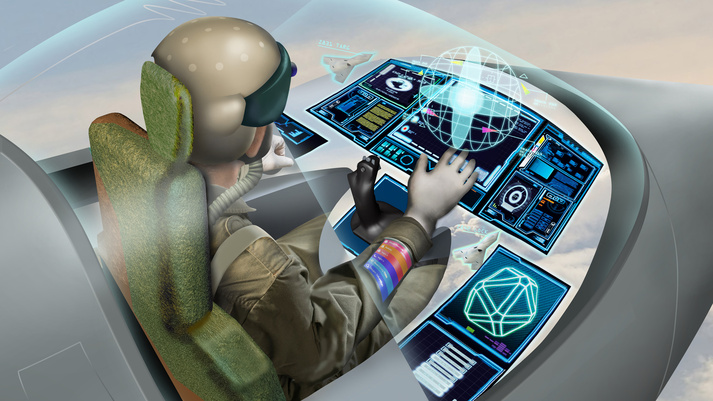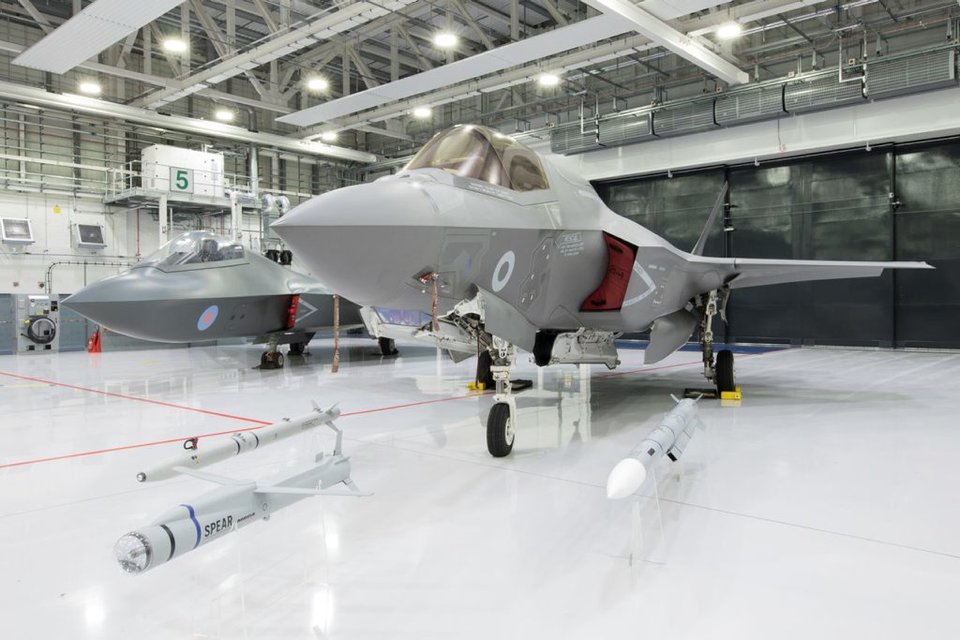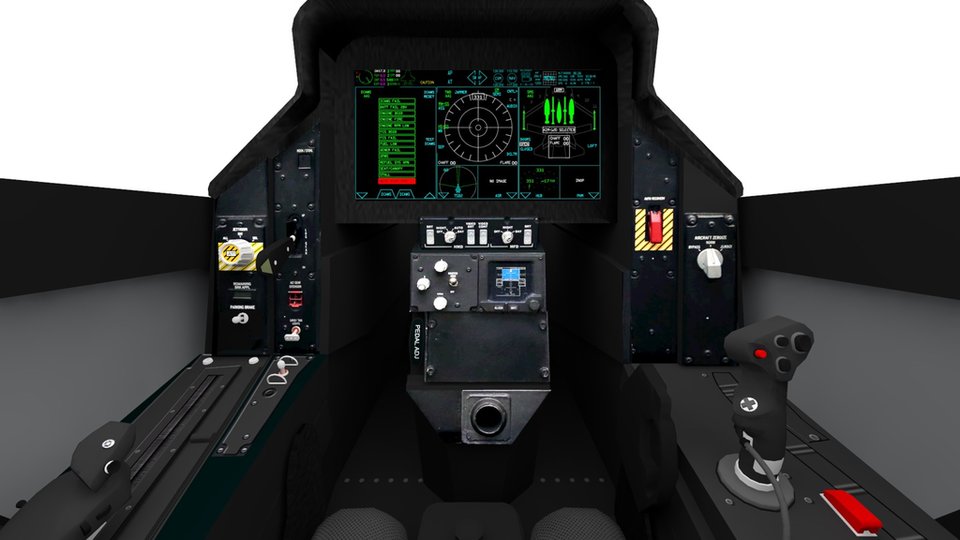AIR
Generation six: training for future fighter aircraft
While fifth-generation fighters such as the F-35 are still in their infancy, the aerospace community is already looking ahead to the sixth generation. With aircraft such as the UK’s Tempest on the horizon, Grant Turnbull finds out how future generations of pilots will be trained to use these increasingly complex platforms.

// Simulators are used much more for F-35 training than for older generation aircraft. Image: Lockheed Martin
Several nations are now in the early phases of funding sixth-generation fighter concepts, with the last 12 months seeing a flurry of activity, particularly in Europe. Just a few months ago, a mock-up of the sleek New Generation Fighter (NGF) was unveiled at the Paris Air Show by the leaders of France, Germany and Spain. The NGF is a pan-European government and industry effort to develop a strategic “systems of systems” as part of what is known as the Future Combat Air System (FCAS).
A cornerstone of the FCAS project is the ability for manned platforms to link up with unmanned “wingmen”, also known as remote carriers, and the introduction of advanced networking technologies that effectively creates an “air combat cloud”. This secure cloud will allow legacy assets to be fully integrated into the sixth-generation battle environment and enhance collaboration with other emerging domains including cyber and space, as well as boost interoperability with allied forces using fifth-gen jets such as the F-35.
Meanwhile, the UK has also unveiled its own efforts to develop a sixth-generation fighter, which is likely to be introduced in the 2030s as a successor to the Eurofighter Typhoon and will operate alongside the F-35 into the late 21st Century. The programme, kown as Tempest, which was first unveiled at the Farnborough Air Show in 2018 as part of the RAF’s Combat Air Strategy, and has since grown, with Sweden signing up in July to cooperate with the UK.
Much like the European FCAS programme, the UK industry team made up of BAE Systems, Leonardo, MBDA and Rolls-Royce is looking at revolutionary technologies to include on the platform that will ensure it retains an advantage on the future battlefield.
While these projects are in the early stages, it is certain that these sixth-gen platforms will integrate an increasing number of electronic sensors that generate huge amounts of fused data for both the pilot as well as offboard systems in other domains. As well as generating its own data, these aircraft will also be able to receive data from other battlefield nodes in the networked battlespace.
Preparing pilots for data overload
The increasing amount of data available for pilots will require new technologies to aid them in achieving mission objectives. This includes areas such as augmented human performance, artificial intelligence, cyber and space technologies, and advanced analytics and computing.
“As military domains become more contested, technologies become more complex, and sources of data multiply, it is crucial that pilots are able to quickly access, assess and act on critical information,” noted aerospace giant BAE Systems, which is taking a leading role in the Tempest aircraft design.
BAE Systems employs a specialist team of human factors engineers who work closely with pilots to gain greater insights into their needs for this increasingly challenging environment. The company has revealed some of the work it is doing in this space, including what it calls a ‘wearable cockpit’ concept, which removes much of the physical elements of the cockpit and replaces it with data projected directly into the pilot’s helmet-mounted display.
This ‘software-only’ cockpit would leverage technologies such as eye-tracking and haptic feedback, allowing the pilot to look at options and use gestures rather than physically press a button.

BAE Systems has developed the "wearable cockpit” concept, which removes many of the physical elements. Image: BAE Systems
Training for sixth-generation platforms
The challenges of flying a sixth-gen platform will also require a new and advanced training approach to address not only the challenges of becoming a combat pilot, but also managing the complex technologies and sub-systems that will be on board. To understand this training complexity, we can look at how today’s pilots are trained on the F-35, which is still the world’s only full fifth-generation fighter aircraft.
According to Lockheed Martin, the F-35’s advanced capabilities means that it is “not possible to adequately challenge pilots in the live environment alone” therefore simulation plays a more prominent role in the training process compared with previous generation platforms.
“With sixth-generation aircraft, this virtual-live mix for pilot training could be even more heavily dependent on simulator time in the future.”
Pilots train for a broad range of missions in the simulator including air-to-air, air-to-ground and electronic warfare sorties, with the fidelity of the full mission simulators allowing up to 55% of initial training flights to be conducted virtually. This is a marked increased from aircraft such as the fourth-generation F-16, with initial pilot qualification requiring 40% simulator time.
With sixth-generation aircraft, this virtual-live mix for pilot training could be even more heavily dependent on simulator time in the future, explained Tim Davies, a former senior flying instructor on the RAF’s Hawk T2 platform. “I think the balance will be probably 70-30,” he said.
Davies is now the strategy director for the UK-based aerospace project Aeralis, which is developing a new training aircraft and formulating an innovative training ecosystem for future sixth-generation aircraft pilots.

The Royal Air Force could operate a mixed fleet F-35 Tempest fighter aircraft in the 2030s. Image: Crown Copyright / MOD
Expanding the virtual world
The end-to-end training and simulator course being developed by Aeralis is data-driven, allowing air forces to monitor whether the mix of live and virtual training is working for their students, and whether amendments need to be made.
The company is seeking investment to build an affordable jet aircraft for this purpose - available in both a basic single engine and advanced twin engine configuration, both of which share 85% commonality - which customers could lease as a complete training solution, along with instructors that understand the technical, physiological and psychological stresses that flying next-generation fighter aircraft brings.
“You can represent all the sixth-generation systems you need synthetically on board the aircraft, you don’t actually need to build the systems.”
The Aeralis training aircraft will feature re-configurable cockpits with advanced wide-area displays - a common feature of new fighter aircraft - and virtual systems that can simulate sixth-generation capabilities.
“You can represent all the sixth-generation systems you need synthetically on board the aircraft, you don’t actually need to build the systems,” Davies explained. This, along with the common architecture in both variants, will reduce pilot training times and keep costs low, with Aeralis noting that lifecycle costs could be 30% less than competitor systems.
Davies also noted that the sixth-generation training syllabus will introduce increasing levels of “gamification”, allowing students to learn by themselves and not to feel “force fed”.
Challenges persist however, especially when it comes to educating governments and air forces that are not geared towards innovation and change. “I'm trying to get this across to some militaries and it is really hard and it's because they haven't done it before,” said Davies. “It's not their fault, it's just hard for them to understand.”

The Aeralis training aircraft will feature re-configurable cockpits with advanced wide-area displays. Image: Aeralis